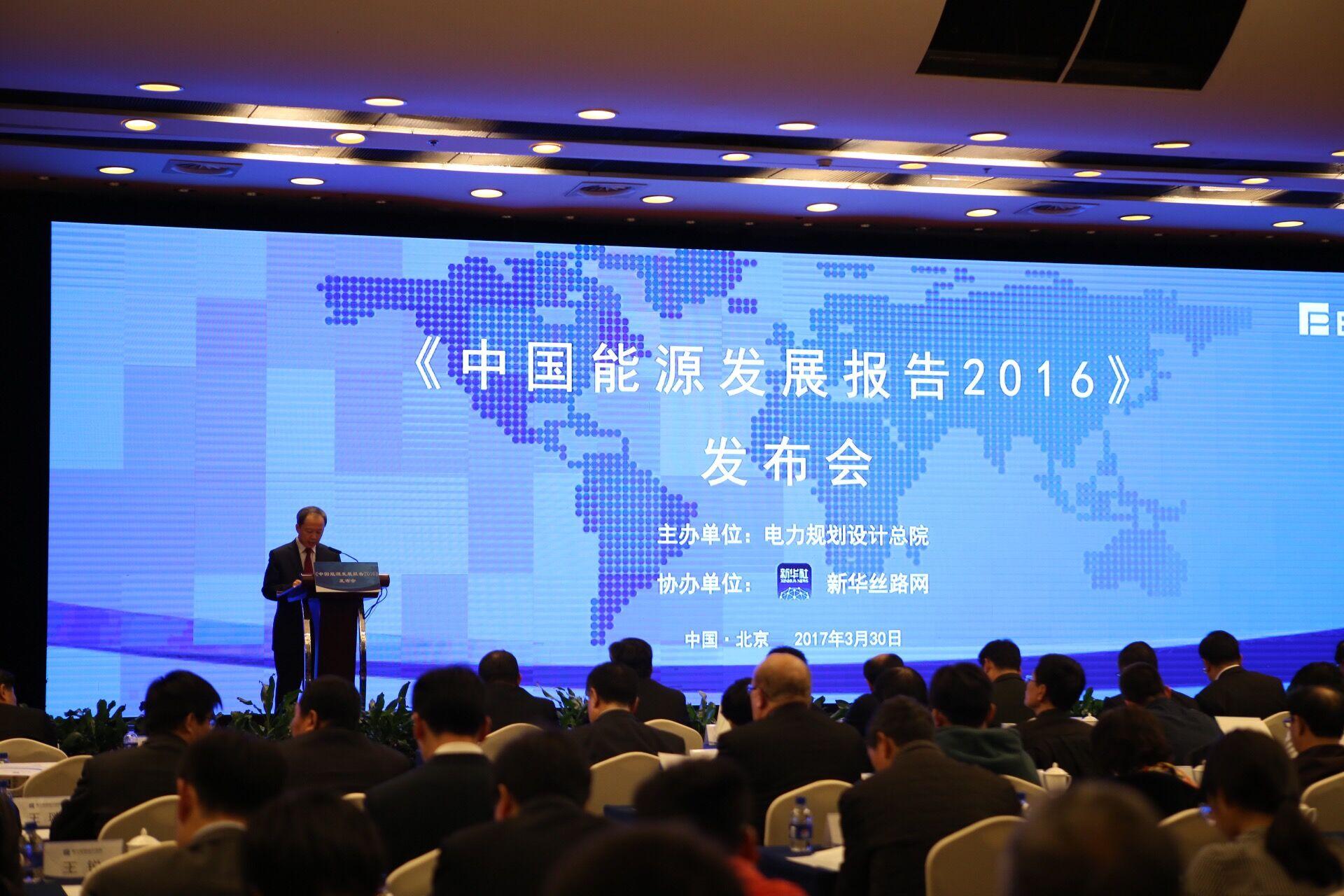
(The Electric Power Planning & Engineering Institute (EPPEI) holds a conference to release the 2016 China Energy Development Report on March 30 in Beijing.)
BEIJING, March 30 (Xinhua) – China’s primary energy output is likely to hit 3.65 billion tonnes of coal equivalent (TCE), including 3.65 billion tonnes of raw coal, 150 billion cubic meters of natural gas, 195 million tonnes of crude oil, and 1.9 trillion kilowatt-hours of primary electricity, according to an annual energy development report for 2016 released by Electric Power Planning & Engineering Institute (EPPEI) on March 30.
In 2016, China yielded notable achievements in energy supply-side structural reform with prioritized energy supply structure.
According to the report, sharp decline in raw coal and crude oil output led to 4.2 percent year-on-year decrease in China’s total primary energy output in 2016, while unconventional gas developed vigorously with shale gas, CBM, and CTG output respectively hiking 68 percent, 13 percent, and 100 percent year on year. Besides, new energy saw fast development. Wind power and PV power output grew 29 percent and 69 percent year on year respectively, presenting 2 percent and 0.6 percent in total primary energy output.
Nevertheless, the energy supply-side structural reform encountered obstacles in 2016. The de-capacity in coal industry triggered hikes in coal prices; refining and thermal power industries still face risks of excessive capacity; oil and gas infrastructure construction slowed down; and curtailment of wind power, solar power, and hydropower is yet to be alleviated.
Therefore, the report suggest precision administration in excessive coal capacity reduction, taking effective measures to prevent risks of excessive thermal power capacity, making larger investment in oil and gas exploration, strengthening construction of gas infrastructure, and promoting consumption of renewable energy.
For energy supply trend in 2017, the report forecasts that domestic oil output may further decline. With grimmer situation in refining capacity excessiveness, China is expected to see a clearer pattern of large crude oil imports and large product oil exports. Net exports of product oil are expected to top 40 million tonnes in 2017 and approach 50 million tonnes by 2020.
Shale gas and CBM output is expected to maintain relatively fast growth in 2017, and the growth of domestic natural gas output would outstrip that in 2016.
In 2017, the coal sector is likely to cut another more than 150 million tonnes of outdated production capacity, and raw coal output would rebound slightly. Coal imports may decrease when coal price returns to a normal band.
The new installed capacity of power generation in 2017 is expected to top 100 million kw and the supply capacity will be more than enough in general. The hydropower output will increase by a small margin. The wind and PV power will maintain a high-speed growth. The proportion of the capacity put into operation in the eastern and middle parts of the country will continue to rise. There will be less coal-fire power projects put into operation and the utilization hour will continue to drop.
This has been the first annual energy development report released by EPPEI. Writers of the report once participated in formulation of China’s 2016-2020 development plan for energy industry and preliminary research work for the plan.
EPPEI was authorized by the National Energy Administration in 2009 to take the responsibility of standards management of China's electric power industry. As a state-level high-end advisory institute, the EPPE mainly serves the government departments, financial institutions and energy and electric power enterprises, providing them with such services as industrial policy, development strategy, development planning, new technology research and assessment, evaluation and consultancy, for electric power projects, standardization of scientific research, information technology, international exchange and cooperation. Enditem (Edited by Li Xiaohui, lixh@xinhua.org)




 A single purchase
A single purchase









